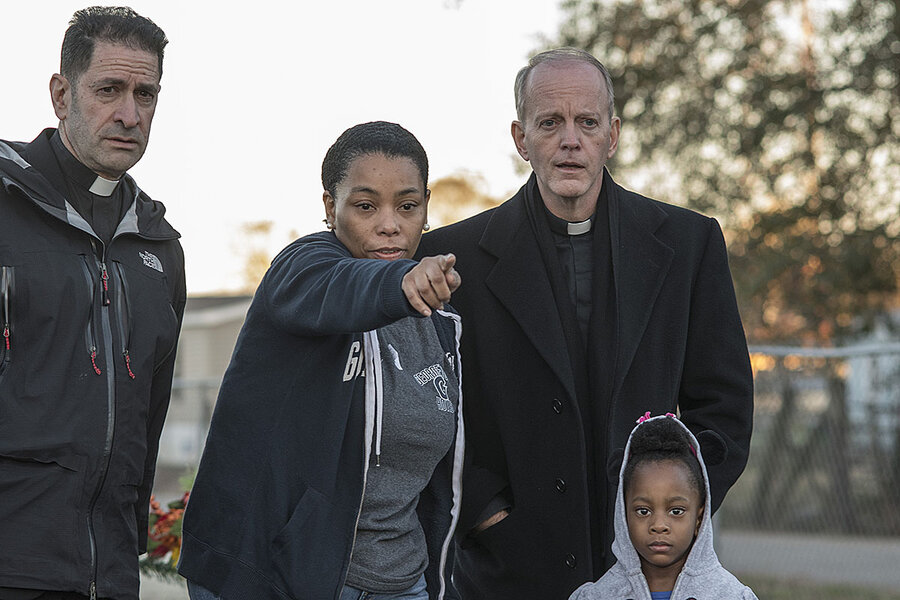How are slave descendants, Jesuits working to reconcile?
Loading...
In December 2017, Jessica Tilson made a plea to visiting Jesuits to give her ancestors a proper burial, and maybe help support the upkeep of the cemetery there in Maringouin, Louisiana, one of the locations where enslaved people labored after the Maryland Jesuits sold them in 1838.
I spoke with her this week about the historic student vote at Georgetown in favor of a “reconciliation contribution” they want tacked on to tuition.
I also asked what had become of her request that day to the Rev. Timothy P. Kesicki, S.J., president of the Jesuit Conference of Canada and the United States. His visit had seemed so ripe with promise.
Why We Wrote This
We checked in with one of the descendants of the group known as the GU272 to see what has happened after a promising first meeting in 2017 with Jesuits, representatives of the religious order that sold the 272 enslaved people to help keep Georgetown afloat.
"With the Jesuits, nothing's happened," she says. “I don’t fault them, because I didn’t reach out to them, they didn’t reach out to me.”
Father Kesicki has been participating in continuing dialogues between GU272 descendants, Georgetown, and the Jesuits, facilitated by the W.K. Kellogg Foundation, a spokesman told me when I emailed earlier this week.
Meanwhile, on her own, Ms. Tilson created a fundraising page on Facebook seeking help for grave markers and a memorial bench.
In thinking about what the Jesuits did to her ancestors, she asks herself, “What could make me feel whole again?” Her answer: “Nothing. So I’m not about to string them along when I know, you can’t right this wrong, you just can’t.”
But in the same conversation she says she’d like to see Georgetown students get to know descendants and offer their time, perhaps through pen pal relationships or tutoring kids over Skype.
She plans to visit Georgetown this fall and do research in the archives. A professor there has brought a class of students to Maringouin several times, but for those who can’t visit, “I’m gonna bring Maringouin to them,” Ms. Tilson says. And she’ll tell them, “Everybody knows slavery happened, so don’t feel guilty when you talk to me. … I won’t get offended by anything, because you are coming to learn for a reason.”
Editor's note: This column appeared in our Culture & Learning newsletter on June 21. You can subscribe for free here.








